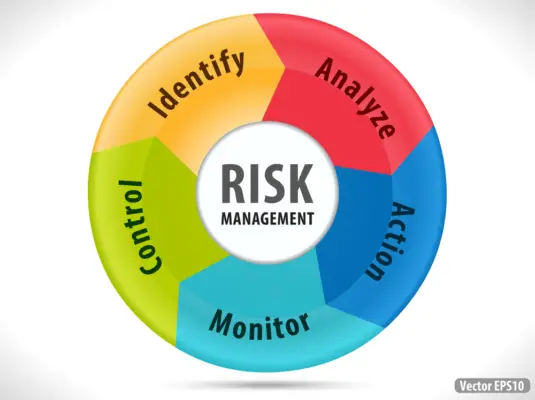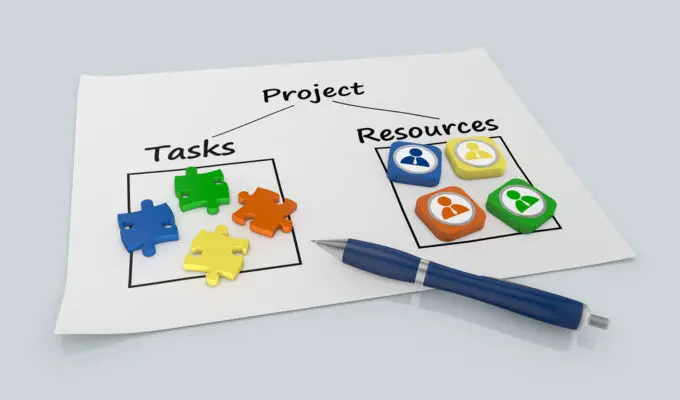In an era where advances in technology and shifting economic landscapes herald inevitable changes in organizational strategies and practices, understanding and effectively managing these changes becomes more critical.
This article explores Change Management, focusing on the principles underpinning this concept, proactive leadership’s role, and the variables determining its success.
Prosci’s ADKAR model, a renowned change management tool, garners particular attention with an in-depth look at its elements—Awareness, Desire, Knowledge, Ability, and Reinforcement.
Additionally, the essay sheds light on the practical application of the Prosci methodology, highlighting the importance of training and discussing measures and metrics that can evaluate the success of a change management strategy.
Understanding Change Management
The Fundamental Tenets of Change Management: A Discerning Excursion into its Pivotal Components
Change management has firmly entrenched itself as an indispensable discipline in the labyrinthine organizational theory and operation world.
Its overarching aim – to ensure that methodological transitions occur smoothly with reduced resistance, enhancing corporate viability – is undeniably crucial.
However, fully appreciating change management’s instrumental role necessitates an in-depth understanding of its bedrock tenets.
Meticulous Planning: The Bedrock of Efficient Change
Initial strides in the voyage of change management must be dedicated to meticulous planning. Investing effort and resources in establishing a detailed plan well in advance is quintessentially crucial.
Planning is crucial for both internal and external growth, providing guidance on the ‘what,’ ‘when,’ ‘how,’ and ‘who’ of transitions.
Beyond addressing logistical aspects, planning anticipates potential challenges, paving the way for preemptive solutions.
Communication: The Vital Lifeline for Seamless Transitions
Nothing fuels successful change management like cogent communication. It serves as the vital artery linking the organization’s leadership and workforce, ensuring everyone is aligned with the upcoming changes.
Regular, concise, and considerate messages demystify the change process, reducing trepidation and fostering an environment conducive to smooth transitions.
Education and Training: Investing in Capabilities
Given the widespread impact of change, it is salient that all involved parties are adequately equipped with the requisite skills and knowledge.
Education and training enterprise-wide will ensure everyone can adapt, contribute, and excel despite the changes. This investment in capabilities increases stakeholders’ confidence, further solidifying support for the transition.
Supported by Leadership: The Cornerstone of Change Management
One cannot undervalue the weighty role of leadership in instituting change. Leaders are catalysts for change, embodying its necessity and guiding their teams through its associated complexities.
Strong, committed leadership augments employees’ trust, smoothing out the change process through their guidance and support.
Mindful of Culture: Navigating the Hidden Iceberg
Perhaps the most elusive yet significant aspect of change management is grappling with organizational culture.
Often termed the ‘hidden iceberg’ of management, cultural aspects infuse every part of the organization, potentially disrupting even the best-laid plans.
Hence, effectively managing change requires an acute understanding of and respect for a company’s established cultural norms.
With its labyrinthine intricacies, change management remains as much an art as a science. By adhering to its fundamental tenets and embracing change with strategic forethought and targeted efforts, organizations are better positioned to navigate transitions effectively.
Thus, mastering these underpinning principles allows leadership to survive and prosper amid continual change.

Prosci ADKAR Model: An Overview
The Prosci ADKAR Model: A Powerful Tool for Streamlining Change Management
The Prosci ADKAR model, a pioneering methodology in the change management domain, encapsulates five distinct components: Awareness, Desire, Knowledge, Ability, and Reinforcement (ADKAR).
These systematically harmonize individual and organizational transitions, ultimately augmenting the success rate of any implemented changes.
The initiation phase of change management, as the ADKAR model explicates, deeply involves Awareness. This process begins by elucidating the reasons driving the change, its benefits, and potential risks.
Creating a workplace culture of transparency and awareness is essential in successfully implementing changes. The ADKAR model helps by providing clear explanations to employees about why changes are happening. This promotes mutual understanding, reducing resistance and apprehension during the initial stages of implementation.
Following Awareness, the next linchpin is Desire. The ADKAR model emphasizes developing a deep-seated Desire within employees to support and engage in the change process.
Here, the model intersects with studies of motivation and psychologically based commitment principles, incorporating them into a larger systemic structure.
Desire, in this model, serves not only as a tangible measure of willingness to change but also as a tool to mobilize this willingness into actionable progress.
Promulgating Knowledge retaining to the change process is another pivotal springboard within the ADKAR model. This suggests giving participants access to precise information, tools, and resources required to enact change, thus eliminating uncertainty.
The model suggests comprehensive training programs and knowledge-sharing forums as effective strategies for this transmission.
Next in line is Ability, which delves into actual implementation. Herein, the learned Knowledge is put to the test – if individuals can successfully utilize their newfound abilities to implement change, it is deemed a success.
This highly practical phase depends heavily on continuous practice, feedback, and iterations, substantiating the adage that experience is the best teacher.
Finally, the ADKAR Model concludes with Reinforcement. It vouches for consolidating the changes into the regular operating protocols and establishing reward systems that promote adherence to the newly implemented strategies.
This last step ensures that the implemented change persists over time, thereby maximizing the return on investment and minimizing the likelihood of failure.
The ADKAR model provides a magnifying lens to dissect, understand, and apply change, treating it as an intricate dialogue between organizational directives and individual adaptability.
The model serves as a change management tool by emphasizing individual stages and their synchronization, bridging the gap between planning and execution.
Effectively leveraging the ADKAR model catapults change management from a managerial task into a more comprehensive and scientifically rigorous endeavor.

Applying Prosci Methodology in Change Management
Building from the foundation of meticulous planning and assertive communication, one must further refine the application of Prosci’s methodology in managing organizational change effectively.
Here, three significant tracks are recommended: operationalization of the ADKAR model, engagement in individual transitions, and integration of change management into project management.
Operationalizing the ADKAR model is an imperative venture in the application of Prosci’s methodology. One must not merely understand Awareness, Desire, Knowledge, Ability, and Reinforcement as theoretical concepts but realize their potential in tangible scenarios.
Since this model forms the backbone of Prosci’s methodology, converting abstract constructs into evident, observable phenomena in the workspace could significantly accentuate its impact.
This practical step can also enhance the model’s spectrum by identifying new areas to be addressed, thus offering a holistic perspective on change management.
Engaging with the employee’s individual transition forms the second track. Prosci’s methodology firmly believes that organizational change is a collection of individual changes.
A meticulous understanding of the concerns, aspirations, and expectations that each employee associates with change is mandatory.
This understanding would enable the sculpting of personalized methods to invoke the Desire and Ability within each employee to adopt the change.
Tailoring strategies to accommodate individual transitions can thus catalyze the overall acceptance and, consequently, the effectiveness of organizational change.
Our third track converges change management with project management. Integrating these two might appear as a mere amalgamation on the surface but it holds immense potential in refining the effectiveness of change.
Embedding the ADKAR model into project management strategies can promote harmony and synchronization between departments.
Such integration paves the way for a comprehensive approach – tackling microcosmic obstacles within individual units while simultaneously addressing the macrocosmic view of the organization.
Moreover, to navigate the vagaries of organizational culture, it is advisable to adapt Prosci’s methodology with due consideration to the organization’s unique cultural nuances.
Giving due regard to these cultural variables could mitigate resistance and improve acceptance of change, further underscoring the importance of the ADKAR model.
The application of Prosci’s methodology can be substantially amplified by operationalizing the ADKAR model, personalizing transitions, and amalgamating change management into project management.
These practical steps could propel the effectiveness of managing change, paving the way for a fluid, adaptable organization vested in growth and progress.
Treating the organizational culture not as a challenge but as a potential facilitator could further optimize the application of the ADKAR model, revealing the unwrought marvels of Prosci’s methodology.

Importance of Training in Prosci Change Management
The value of training in implementing the Prosci method cannot be overstated. Theoretically, understanding the Prosci model is a different terrain versus practically applying it in organizational change processes.
It’s akin to the difference between understanding the principles of navigation and steering a ship in stormy seas. Both require knowledge, but the latter also compels application, expertise, and finesse, all of which are developed through focused training.
Effective change management requires more than just strategy; it is inherently bound to the people who utilize and are affected by these changes. The Prosci method emphasizes this, highlighting personal and professional transitions as critical linchpins for successful change.
Training, hence, serves as the rudder that directs these transitions, ensuring that stakeholders not only grasp why change is essential but also comprehend how to apply their knowledge in real-world scenarios.
This critical exercise fosters proficiency in the Prosci model, facilitating the transformation from mere spectators of change to active orchestrators.
The backbone of the Prosci method – the ADKAR model, is instrumental in the process of change. Nonetheless, the power to operationalize this model doesn’t reside in understanding its five elements: Awareness, Desire, Knowledge, Ability, and Reinforcement. The practical implementation of each component forms the crux of effective change management.
Training, in this context, serves as an active catalyst. Through systematic and continual training, awareness breeds insight, desire transcends into dedication, theoretical knowledge shapes into pragmatic skillsets, ability matures into progress, and reinforcement becomes a pledge towards sustainability.
Unsurprisingly, the Prosci method espouses an approach that is integrated – it enjoins change management and project management that is egressed through rigorous training.
This harmonized approach ensures a smooth transition that aligns with the project’s objectives and changes management processes. Herein, training plays the dual role of amalgamating diverse processes and engendering a collaborative floor for dialogue, comprehension, and methodologies.
Organizational culture plays a vital, sometimes underestimated, role in the Prosci method. The labyrinthine aspects of culture – comprising values, beliefs, and perceptions – complicate the process of change management.
A well-structured training system, aptly tailored to the unique cultural attributes of an organization, offers a roadmap to navigate these complexities.
In summation, it is through training that the theoretical foundations of the Prosci method transmute into tangible procedures.
The benefits of this process are manifold – it nurtures adaptability, catalyzes ingenuity, fosters resilience, and ultimately, grooms organizations to steer the helm of change rather than being passive voyagers amidst change currents.
The Prosci method, thus, advances from being an abstract model to a functioning mechanism, potent and ready for implementation. Training undeniably breathes life into this transition.

Evaluating Success in Prosci Change Management
OUR EVALUATIVE APPROACH: THE REALIZATION OF PROSCI CHANGE MANAGEMENT
Having illuminated the central tenets and transformative potential of the Prosci Method, renowned for its integration of meticulous planning, comprehensive training, communication, and the imperative role of leadership, we now explore a scientific framework for evaluating its success in organizational change management pursuits.
Measurement becomes instrumental in unpacking the applicability and effectiveness of Prosci’s change management. It fosters insight through which organizations can objectively appraise the deployment of the Awareness, Desire, Knowledge, Ability, Reinforcement (ADKAR) model, the quintessence of the Prosci Method.
THE QUANTIFIABLE EFFECTIVENESS MEASUREMENT
Prosci’s prowess underscores the necessity of suitably designed metrics for translating abstract variables such as Desire or Knowledge into quantitative marks of progress.
By leveraging Performance Behaviour Analysis and Impact Evaluation, organizations can assess the success of implementing awareness campaigns, evoking desire, disseminating essential knowledge, and the general implementation of the ADKAR model.
This quantitative output facilitates clear, empirical feedback, enabling an unambiguous appraisal of individual and overall organizational transition.
SUCCESS MARKERS: THE CHANGE SCORECARD
Another robust tool at the disposal of organizations is the Prosci Change Scorecard, a systematic yardstick for transformation success, capturing both qualitative and quantitative data.
This scorecard hinges upon an organization’s clearly defined objectives, enabling a focused assessment of employees‘ progress through the levels of the ADKAR model, further contextualizing the quantitative metrics with firsthand narratives of change.
INFORMATION GLEANED THROUGH SURVEYS
Additionally, the usage of well-structured surveys provides a platform for employees to articulate their experiences and perceptions of the change process, offering invaluable feedback for evaluating the success of the Prosci method.
These surveys allow organizations to gauge the effectiveness of communication, inclusivity of transformation strategies, impact on employee morale, and overall comprehension of change goals — tangible manifestations of Prosci’s principles in operation.
ROLE OF FEEDBACK CYCLES IN CONTINUOUS IMPROVEMENT
The quintessence of the Prosci method lies in its applicability over cycles of change, reinforcing the importance of feedback loops.
These iterative processes provide invaluable data about the organization’s ability to embrace and reinforce change while iteratively refining the approach to ensure sustained effectiveness.
Hence, monitoring these feedback cycles allows organizations to make proactive adjustments, fortifying the resilience of the Prosci Method and ensuring its long-term success.
In conclusiveness, evaluating the success of the Prosci method is an exercise in empirical exploration anchored in well-designed measures and responsive feedback systems.
Enacting this evaluative approach provides organizations with the insight necessary to continually refine their change management endeavors, ensuring the Prosci Method remains a dynamic tool for transformation.

Through a comprehensive exploration of Prosci’s change management approach, we can appreciate the critical role of an organized, structured model in successfully managing changes within an organization.
The Prosci ADKAR model stands as a testament to this approach’s effectiveness, shedding light on the need for Awareness, Desire, Knowledge, Ability, and reinforcement in the change management journey.
Moreover, the importance of adequate training and the application of standard measures for success evaluation underlines the necessity for a strategic, well-informed approach to change.
By understanding and implementing these principles and strategies, businesses can better navigate the currents of change, fostering growth, innovation, and sustainability.

Chris Ekai is a Risk Management expert with over 10 years of experience in the field. He has a Master’s(MSc) degree in Risk Management from University of Portsmouth and is a CPA and Finance professional. He currently works as a Content Manager at Risk Publishing, writing about Enterprise Risk Management, Business Continuity Management and Project Management.

